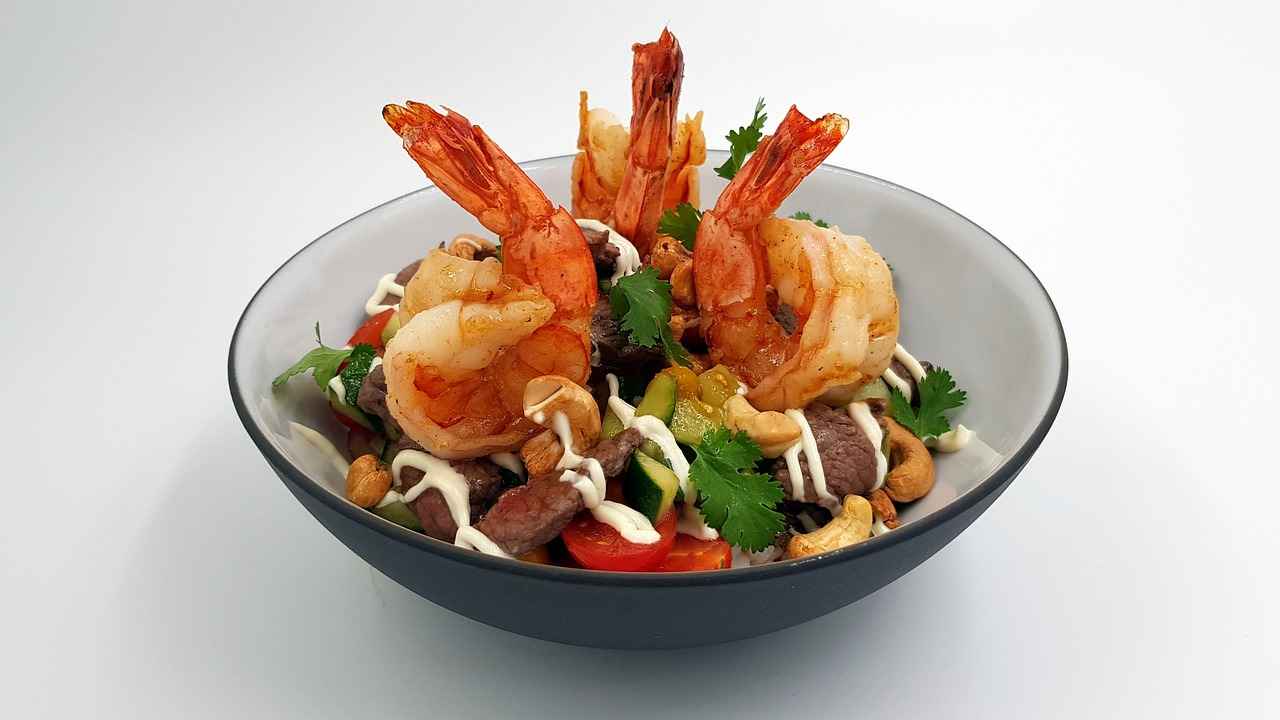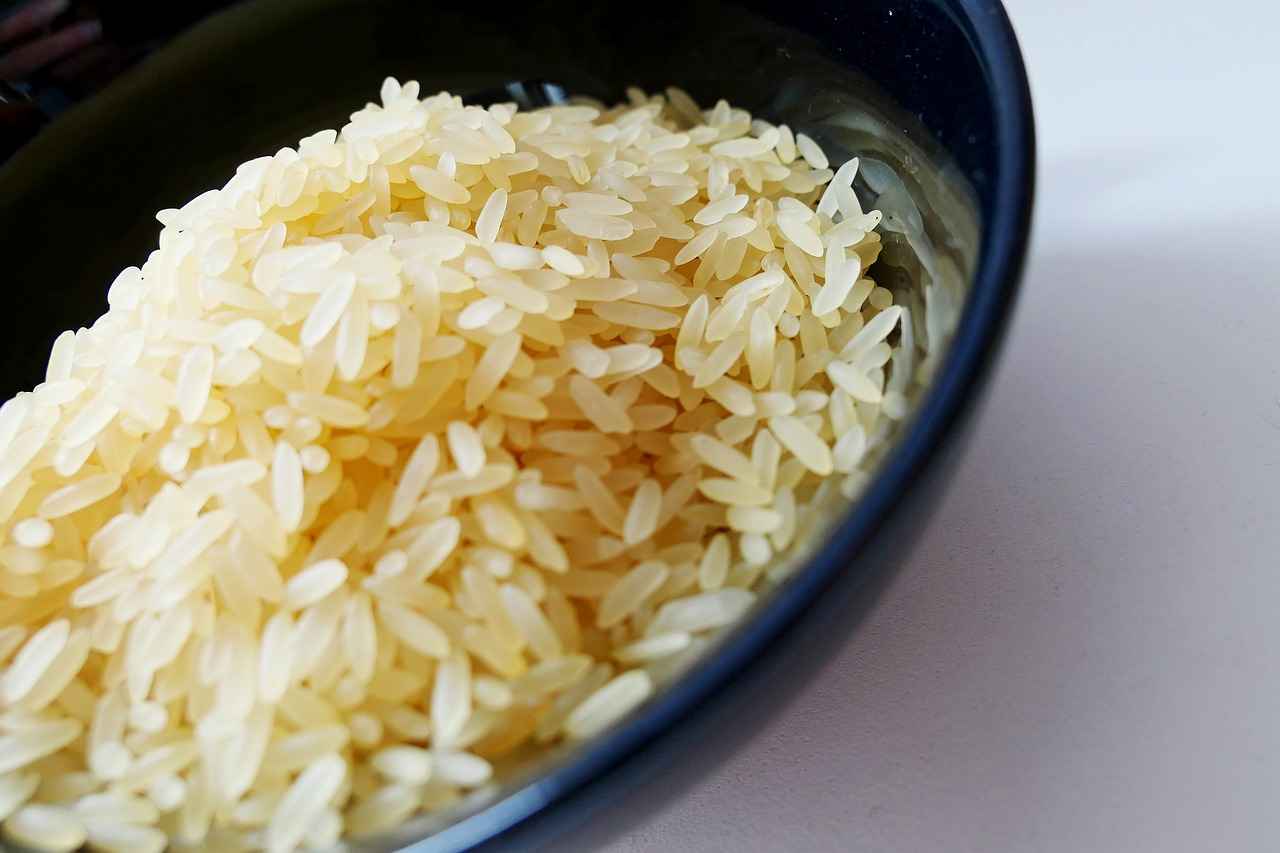This article serves as a comprehensive guide for aspiring entrepreneurs looking to launch a poke bowl business. With the growing trend towards healthy eating and customizable meal options, poke bowls have gained immense popularity. This guide will delve into essential aspects such as market analysis, operational strategies, and effective marketing tips to help you navigate the competitive food industry.
Poke bowls are not just a food trend; they represent a shift towards health-conscious dining. Their fresh ingredients and customizable nature appeal to a diverse customer base. By entering this market, you can tap into the growing demand for quick, nutritious meals that cater to various dietary preferences, such as vegan, gluten-free, and low-carb options.
Understanding your target audience and competition is crucial for success. Here are some effective techniques:
- Identifying Your Target Audience: Determine the demographics of your potential customers. Are they young professionals, health enthusiasts, or families? Tailoring your offerings to meet their preferences will enhance customer satisfaction.
- Utilizing Surveys and Feedback: Conduct surveys to gather insights into customer preferences. Feedback can help refine your menu and services, ensuring you meet and exceed expectations.
- Analyzing Competitors: Study your competitors to identify their strengths and weaknesses. Understanding their offerings can help you find gaps in the market and position your poke bowl business effectively.
The foundation of a successful poke bowl business lies in the ingredients. Here’s how to ensure quality:
- Fresh and Sustainable Sourcing: Build relationships with local suppliers to ensure you have access to the freshest ingredients. Sustainability is key; customers appreciate businesses that prioritize environmentally friendly practices.
- Creating a Diverse Menu: Offer a variety of poke bowl options, including traditional and innovative recipes. This diversity will attract a broader customer base and encourage repeat visits.
A well-thought-out layout can enhance the customer experience and improve operational efficiency:
- Creating an Inviting Atmosphere: The ambiance of your poke bowl business plays a significant role in customer retention. Use design elements that create a welcoming environment, such as warm lighting and comfortable seating.
- Efficient Kitchen Workflow: Design your kitchen for maximum efficiency. An optimized layout can reduce wait times and improve service quality, which is crucial in the fast-paced food industry.
Effective marketing can significantly impact your poke bowl business’s visibility and growth:
- Leveraging Social Media: Utilize platforms like Instagram and Facebook to showcase your poke bowls. Engaging with customers through eye-catching visuals and interactive content can build a loyal community.
- Local Partnerships and Events: Collaborate with local businesses and participate in community events to boost your visibility. These partnerships can enhance your brand presence and attract new customers.
Financial management is critical for sustainability. Here are some insights:
- Budgeting and Financial Planning: Establish a solid budget that outlines your expected expenses and revenue. Understanding key financial metrics will help you make informed decisions.
- Operational Efficiency and Staff Training: Invest in staff training to enhance service quality. Optimizing operations can lead to smoother business functioning and improved customer satisfaction.
By following these guidelines, you can set a strong foundation for your poke bowl business. With the right strategies and a focus on quality, you can thrive in the competitive food industry.

Why Choose a Poke Bowl Business?
In recent years, the poke bowl has emerged as a trendy culinary delight that appeals to health-conscious consumers and food enthusiasts alike. This surge in popularity is not just a passing fad; it reflects a growing demand for fresh, customizable, and nutritious meals. By exploring the reasons behind this phenomenon, aspiring entrepreneurs can uncover the potential of starting a poke bowl business.
The appeal of poke bowls in today’s food market is multifaceted. First and foremost, these bowls offer a healthy dining option that caters to various dietary preferences, including gluten-free, low-carb, and vegetarian choices. With an increasing number of consumers prioritizing health and wellness, poke bowls present a unique opportunity to tap into this lucrative market.
- Customization: One of the primary draws of poke bowls is their customizability. Customers can choose their base, protein, toppings, and sauces, allowing for a personalized dining experience. This flexibility not only enhances customer satisfaction but also encourages repeat visits.
- Fresh Ingredients: Poke bowls are typically made with high-quality, fresh ingredients. This emphasis on freshness appeals to consumers who are increasingly wary of processed foods. By sourcing local and sustainable ingredients, business owners can further enhance their brand image and attract eco-conscious customers.
- Visual Appeal: The vibrant colors and artistic presentation of poke bowls make them highly Instagrammable. In an age where social media plays a significant role in food choices, having visually appealing dishes can drive organic marketing and attract new customers.
Moreover, the poke bowl market is witnessing a shift towards sustainability. Many consumers today are concerned about the environmental impact of their food choices. By focusing on sustainable sourcing and eco-friendly practices, poke bowl businesses can resonate with this audience and differentiate themselves from competitors.
As the food industry continues to evolve, staying ahead of trends is crucial. The rise of poke bowls is not just about taste; it’s about a lifestyle that embraces health, sustainability, and creativity. Aspiring entrepreneurs can capitalize on these trends by launching a poke bowl business that aligns with consumer values.
In conclusion, the poke bowl business offers a promising avenue for entrepreneurs looking to enter the food market. With their health benefits, customization options, and visual appeal, poke bowls are well-positioned to thrive in today’s competitive landscape. By understanding the factors that contribute to their popularity, business owners can create a successful venture that meets the demands of modern consumers.

How to Conduct Market Research for Your Poke Bowl Business?
When embarking on the journey of launching a poke bowl business, understanding the market landscape is essential. This involves not only identifying your target audience but also analyzing your competition. Conducting thorough market research can help you uncover valuable insights that will guide your business strategy and ensure you meet consumer demands effectively.
Market research allows you to gather data about your potential customers and understand their preferences. By identifying trends in the poke bowl niche, you can tailor your offerings to align with consumer desires, ultimately leading to higher sales and customer satisfaction.
To conduct effective market research, consider utilizing the following techniques:
- Surveys and Questionnaires: Create online surveys or distribute questionnaires to gather direct feedback from potential customers. Ask about their favorite ingredients, portion sizes, and any dietary restrictions they may have.
- Focus Groups: Organize focus groups to engage with a small number of participants. This qualitative approach allows for in-depth discussions about preferences and perceptions related to poke bowls.
- Social Media Listening: Monitor social media platforms to gauge customer sentiment and trends. Pay attention to hashtags related to poke bowls, and engage with users to understand their opinions.
- Competitor Analysis: Study your competitors to identify their strengths and weaknesses. Analyze their menu offerings, pricing strategies, and customer reviews to find gaps in the market that your poke bowl business can fill.
Knowing your target audience is crucial for developing a successful marketing strategy. Consider the following demographic factors:
- Age: Understand the age range of your potential customers. Are they college students, young professionals, or families?
- Health Consciousness: Many poke bowl enthusiasts prioritize healthy eating. Identify whether your audience is health-conscious and what specific dietary preferences they may have.
- Location: Analyze the geographical location of your target market. Are they in urban areas with a high demand for quick, nutritious meals?
In the fast-paced food industry, staying updated with market trends is vital. Some current trends influencing the poke bowl market include:
- Sustainability: Consumers are increasingly interested in sustainable sourcing practices. Highlighting your commitment to using eco-friendly ingredients can attract environmentally conscious customers.
- Customization: Offering customizable poke bowls allows customers to tailor their meals to their preferences. This trend caters to the growing demand for personalized dining experiences.
By implementing these market research techniques, you can gain a comprehensive understanding of your target audience and competition. This knowledge will not only help you create a unique selling proposition for your poke bowl business but also ensure that you meet the evolving needs of your customers.
Identifying Your Target Audience
Understanding your target audience is a pivotal aspect of launching a successful poke bowl business. By identifying who your customers are, you can tailor your offerings to meet their specific needs and preferences. This section delves into the importance of demographics, consumer preferences, and effective engagement strategies to connect with potential customers.
Demographics: Who Are Your Customers?
Demographics encompass various characteristics of your potential customers, including age, gender, income level, and lifestyle choices. By analyzing these factors, you can create a clear profile of your target audience. For instance:
- Age: Poke bowls often appeal to younger consumers, particularly millennials and Gen Z, who prioritize health and convenience.
- Income Level: Understanding the income bracket of your target market can help you price your offerings appropriately.
- Lifestyle Choices: Consumers who value sustainability and healthy eating are more likely to be attracted to poke bowls.
Understanding Customer Preferences
Once you have a clear demographic profile, it’s essential to delve deeper into your customers’ preferences. This can include their taste in flavors, dietary restrictions, and desired dining experiences. Conducting surveys and engaging with customers on social media can provide invaluable insights. Consider the following:
- Flavor Preferences: Are customers leaning towards traditional Hawaiian flavors, or are they more interested in innovative combinations?
- Dietary Restrictions: Offering gluten-free, vegan, or low-carb options can attract a wider audience.
- Dining Experience: Understanding whether your customers prefer a quick grab-and-go option or a sit-down meal can influence your business model.
Engaging Effectively with Potential Customers
Engagement is crucial for building a loyal customer base. Here are some effective strategies:
- Social Media Interaction: Use platforms like Instagram and Facebook to showcase your poke bowls, share customer stories, and engage with your audience through polls and Q&A sessions.
- Community Events: Participate in local food festivals or health fairs to introduce your brand and gather feedback directly from potential customers.
- Personalized Marketing: Leverage customer data to send personalized offers and promotions, making your audience feel valued and understood.
By focusing on these aspects, you can create a customer-centric approach that not only meets the needs of your target market but also fosters loyalty and encourages repeat business. Understanding who your customers are and how to engage with them effectively is the foundation for a thriving poke bowl business.
Utilizing Surveys and Feedback
In the competitive landscape of the food industry, gathering direct feedback from your customers is essential to understanding their preferences and expectations. This can be achieved effectively through surveys, which serve as a powerful tool for obtaining insights that can drive the success of your poke bowl business.
Surveys allow you to collect valuable data directly from your customers, providing a clearer picture of their tastes, dietary restrictions, and overall dining experience. By asking focused questions, you can pinpoint what menu items are well-received and which ones may need improvement. Here are some key benefits of utilizing surveys:
- Understanding Customer Preferences: Surveys can reveal specific flavor profiles, ingredient choices, and portion sizes that your customers favor. This information can guide your menu development and help you create offerings that resonate with your target audience.
- Identifying Areas for Improvement: Customer feedback can highlight aspects of your service or menu that may need refinement. Whether it’s the speed of service, the quality of ingredients, or the ambiance of your establishment, surveys can provide actionable insights.
- Building Customer Loyalty: When customers see that their feedback is valued and implemented, they are more likely to return. This fosters a sense of community and loyalty, which is crucial for long-term success.
- Tracking Trends Over Time: Regularly conducting surveys allows you to track changes in customer preferences and market trends. This will enable you to adapt your offerings and stay ahead of the competition.
To maximize the effectiveness of your surveys, consider the following tips:
- Keep It Short: Customers are more likely to complete shorter surveys. Aim for 5-10 questions that can be answered in under five minutes.
- Use Clear Language: Avoid jargon or complex terminology. Ensure your questions are straightforward and easy to understand.
- Offer Incentives: Encourage participation by offering discounts or freebies in exchange for survey completion. This can significantly increase response rates.
Moreover, utilizing digital survey tools can streamline the process. Platforms like Google Forms or SurveyMonkey allow you to create and distribute surveys easily, analyze results, and implement changes based on customer feedback efficiently.
In conclusion, leveraging surveys and feedback is not just about collecting data; it’s about fostering a relationship with your customers. By actively seeking their opinions and making informed adjustments to your menu and service, you can create a poke bowl business that not only meets but exceeds customer expectations, paving the way for sustained growth and success in the food industry.
Analyzing Competitors
When venturing into the competitive landscape of the poke bowl business, analyzing your competitors is a critical strategy for success. This process not only reveals the strengths and weaknesses of existing players but also uncovers gaps in the market that your business can exploit. By understanding what others offer, you can position your poke bowl venture to meet unfulfilled customer needs.
To begin, start with a thorough market analysis. Identify your local competitors, including established restaurants and food trucks specializing in poke bowls. Create a list that details their offerings, pricing, and customer reviews. This groundwork will provide a solid foundation for your analysis.
| Competitor | Strengths | Weaknesses |
|---|---|---|
| Competitor A | Strong brand recognition, diverse menu | Higher prices, limited vegetarian options |
| Competitor B | Affordable prices, fast service | Quality concerns, basic menu |
| Competitor C | Fresh ingredients, excellent customer service | Long wait times, small location |
Next, evaluate their strengths. What do they do well that attracts customers? This could be anything from high-quality ingredients to exceptional customer service. Conversely, identify their weaknesses. Are customers complaining about long wait times or limited menu options? These insights can help you tailor your poke bowl business to offer something unique.
- Quality of Ingredients: Focus on sourcing the freshest and most sustainable ingredients.
- Menu Diversity: Ensure your menu includes various options, including vegetarian and gluten-free choices.
- Customer Experience: Prioritize excellent service and a welcoming atmosphere to encourage repeat business.
Another vital aspect of competitor analysis is understanding their marketing strategies. Investigate how they promote their poke bowls. Are they active on social media? Do they participate in local events? By analyzing their marketing efforts, you can discover effective strategies to implement in your own business.
Finally, keep an eye on emerging trends in the poke bowl industry. Staying updated can give you a competitive edge. For instance, if competitors are shifting towards more sustainable practices, consider how you can incorporate eco-friendly options into your offerings.
In summary, is not just a one-time task but an ongoing process that can significantly influence your poke bowl business’s success. By continuously monitoring the competition, you can adapt and innovate, ensuring your business remains relevant and appealing to customers.
Trends in the Poke Bowl Market
In the dynamic landscape of the food industry, staying updated with industry trends is crucial for any business, especially in the growing poke bowl market. As consumer preferences evolve, understanding these trends can provide a significant competitive edge for entrepreneurs looking to establish a successful poke bowl business.
One of the most significant trends influencing the poke bowl market is sustainability. As consumers become more environmentally conscious, they are increasingly seeking out businesses that prioritize eco-friendly practices. This trend manifests in several ways:
- Sourcing Local Ingredients: Many poke bowl businesses are now partnering with local farmers and suppliers to ensure that their ingredients are fresh and sustainably sourced. This not only supports local economies but also reduces the carbon footprint associated with transportation.
- Eco-Friendly Packaging: The shift towards sustainable packaging is another area where poke bowl businesses can stand out. Using biodegradable or recyclable materials can attract eco-conscious customers who are willing to pay a premium for environmentally friendly options.
Another notable trend is customization. Today’s consumers value personalized experiences, and poke bowls lend themselves perfectly to this demand. By allowing customers to build their own bowls, businesses can cater to a wide range of dietary preferences and restrictions, including:
- Vegan and Vegetarian Options: Offering plant-based proteins and a variety of vegetables can appeal to health-conscious consumers.
- Gluten-Free Choices: Providing gluten-free bases and toppings ensures that those with dietary restrictions can enjoy poke bowls without worry.
Furthermore, the trend of health and wellness continues to shape the poke bowl market. With consumers increasingly focused on healthy eating, poke bowls, which are typically rich in nutrients and low in calories, fit perfectly into this lifestyle. Highlighting the health benefits of your ingredients—such as omega-3 fatty acids from fish or the antioxidant properties of fresh vegetables—can effectively attract health-oriented customers.
In addition to these trends, the rise of digital ordering and delivery services is transforming how consumers access poke bowls. Businesses that implement user-friendly online ordering systems and partner with food delivery services can reach a broader audience and enhance customer convenience. This shift towards digital engagement is essential for staying relevant in a fast-paced market.
To summarize, understanding and adapting to current trends such as sustainability, customization, health consciousness, and digital engagement can significantly impact the success of a poke bowl business. By aligning your offerings with these trends, you can create a compelling value proposition that resonates with today’s consumers, ensuring your business thrives in a competitive landscape.

What Are the Key Ingredients for a Successful Poke Bowl?
In the competitive landscape of the food industry, choosing the right ingredients is not just a matter of taste; it is essential for ensuring quality and achieving customer satisfaction. As the popularity of poke bowls continues to rise, understanding how to source fresh, high-quality ingredients while offering a diverse menu can set your business apart from the competition.
Why Fresh Ingredients Matter?
Fresh ingredients are the cornerstone of any successful poke bowl. They not only enhance the flavor but also contribute to the overall health benefits that customers seek. Sourcing ingredients locally can lead to better quality and fresher options. Establishing relationships with local suppliers ensures that you have access to the best produce, seafood, and other essential components needed to create delicious poke bowls.
Building Relationships with Local Suppliers
Developing a network of local suppliers can provide several advantages:
- Quality Assurance: Local suppliers often have higher standards for freshness.
- Seasonal Variety: Access to seasonal ingredients can inspire unique menu items.
- Community Support: Supporting local businesses fosters goodwill and strengthens community ties.
Creating a Diverse Menu
A diverse menu is crucial for attracting a broader customer base. By offering a variety of poke bowl options, you can cater to different tastes and dietary preferences. Consider including:
- Traditional Bowls: Classic combinations that highlight authentic flavors.
- Customizable Options: Allowing customers to build their own bowls with a choice of proteins, bases, and toppings.
- Vegan and Vegetarian Choices: Offering plant-based options can attract health-conscious consumers.
Balancing Tradition and Innovation
While it is essential to honor traditional poke bowl recipes, incorporating innovative twists can keep your menu fresh and exciting. Experimenting with flavors, such as adding unique sauces or fusion ingredients, can create a signature dish that stands out in the market.
Emphasizing Quality Over Quantity
While having a wide range of options is important, it is equally essential to maintain quality. Each ingredient should be carefully selected to ensure that it meets your standards. This attention to detail will not only enhance the dining experience but also foster customer loyalty.
Conclusion
In summary, the key ingredients for a successful poke bowl include sourcing fresh, high-quality products and creating a diverse menu that appeals to various customer preferences. By focusing on quality and innovation, your poke bowl business can thrive in a competitive environment.
Fresh and Sustainable Sourcing
is a critical component in the success of any poke bowl business. The growing consumer demand for transparency in food sourcing and a preference for local ingredients cannot be ignored. This section delves into why establishing strong relationships with local suppliers is essential for achieving the best quality and enhancing your brand’s reputation.
First and foremost, sourcing fresh ingredients directly from local farmers and suppliers ensures that your poke bowls are made with the highest quality products. Freshness not only affects the taste but also the nutritional value of the ingredients. When ingredients are sourced locally, they typically have a shorter time from farm to table, which means they retain more of their natural flavors and nutrients.
Building relationships with local suppliers can also lead to better pricing and more favorable terms. By fostering these connections, you may find opportunities for bulk purchasing or exclusive deals that can help reduce your overall costs. This can be particularly beneficial for a startup, allowing you to maintain competitive pricing while offering high-quality products.
- Support for Local Economy: By sourcing locally, you contribute to the community’s economic health. This not only builds goodwill among customers but also enhances your brand image as a socially responsible business.
- Seasonal Offerings: Local suppliers can provide seasonal ingredients, allowing you to create a menu that changes throughout the year. This not only keeps your offerings fresh and exciting but also encourages customers to return to see what’s new.
- Environmental Sustainability: Sourcing ingredients locally reduces the carbon footprint associated with transportation. This commitment to sustainability can be a strong selling point for environmentally conscious consumers.
Moreover, establishing a network of local suppliers allows for greater transparency in your sourcing practices. Customers today are increasingly interested in where their food comes from and how it is produced. By being able to tell the story of your ingredients—who grew them, how they were harvested, and what practices were used—you can create a more engaging dining experience.
In addition to these benefits, sourcing fresh and sustainable ingredients can also enhance your menu’s appeal. When you use high-quality, locally sourced ingredients, you can create a diverse range of poke bowls that cater to various dietary preferences, including vegan, gluten-free, and organic options. This inclusivity can attract a broader customer base and encourage repeat visits.
Finally, consider forming partnerships with local farms or cooperatives. These collaborations can lead to unique marketing opportunities, such as farm-to-table events, where customers can meet the suppliers and learn more about the food they are consuming. Engaging in such initiatives not only strengthens your community ties but also enhances your brand’s visibility and credibility.
In conclusion, the importance of fresh and sustainable sourcing in the poke bowl business cannot be overstated. By prioritizing local suppliers, you can ensure high-quality ingredients, foster community relationships, and position your brand as a leader in sustainability. This approach not only benefits your business but also contributes positively to the environment and the local economy.
Creating a Diverse Menu
In the competitive world of food service, is essential for attracting a wider range of customers. By offering a variety of options, you can appeal to different tastes and dietary preferences, ensuring that your poke bowl business stands out in the market. This section explores how to balance traditional and innovative poke bowl recipes to cater to diverse customer needs.
Firstly, it is crucial to understand the core elements of traditional poke bowls. Typically, these bowls feature fresh fish, rice, and a selection of toppings such as seaweed, avocado, and sesame seeds. However, to reach a broader audience, consider incorporating innovative ingredients that reflect current food trends. For instance, using quinoa or cauliflower rice instead of traditional sushi rice can attract health-conscious customers seeking lower-carb options.
- Vegetarian and Vegan Options: By including plant-based proteins like tofu or tempeh, you can cater to vegetarian and vegan customers. Consider marinating these proteins in flavorful sauces to enhance their appeal.
- Gluten-Free Choices: Offering gluten-free soy sauce or rice-based bowls ensures that customers with gluten sensitivities can enjoy your offerings without worry.
- Seasonal Ingredients: Incorporating seasonal vegetables and fruits not only enhances flavor but also supports local agriculture, appealing to environmentally-conscious consumers.
Moreover, consider introducing customization options that allow customers to build their own poke bowls. This interactive approach not only empowers customers but also encourages repeat visits. Provide a selection of bases, proteins, toppings, and sauces, enabling customers to create a meal that perfectly suits their tastes.
In addition to customization, themed poke bowls can be an exciting way to keep your menu fresh and engaging. For example, you might introduce a “Tropical Bowl” featuring mango, coconut, and shrimp, or a “Spicy Bowl” with jalapeños and spicy tuna. These unique offerings can attract adventurous eaters and keep your menu dynamic.
Lastly, customer feedback is invaluable when refining your menu. Encourage patrons to share their thoughts through surveys or social media. This input can help you identify which dishes are popular and which may need improvement. By staying attuned to customer preferences, you can continuously evolve your menu to meet their desires.
In summary, balancing traditional and innovative poke bowl recipes is vital for attracting a diverse customer base. By offering a variety of options, embracing customization, and staying responsive to feedback, your poke bowl business can thrive in a competitive landscape.

How to Design Your Poke Bowl Business Layout?
Designing the layout of your poke bowl business is a critical step in ensuring both customer satisfaction and operational efficiency. A well-planned space not only enhances the dining experience but also streamlines workflow, making it easier for staff to serve customers promptly. This section outlines essential tips for creating an inviting and functional layout for your restaurant or food stall.
The layout of your poke bowl business can significantly influence customer behavior and overall satisfaction. A thoughtful design encourages customers to explore the menu and increases the likelihood of repeat visits. Furthermore, an efficient layout helps staff work effectively, reducing wait times and improving service quality.
- Customer Flow: Ensure that the design facilitates a smooth flow of customers from entry to ordering to seating. Consider using clear signage and designated paths to guide customers.
- Seating Arrangement: Choose a seating layout that maximizes space while providing comfort. Options like communal tables or cozy booths can cater to different customer preferences.
- Visibility of the Menu: Place your menu in a prominent location, preferably near the entrance or above the ordering counter. This allows customers to make informed decisions quickly.
To enhance the dining experience, focus on creating a warm and welcoming ambiance. Here are some tips:
- Lighting: Use soft, warm lighting to create a cozy environment. Consider adjustable lighting to set different moods during various times of the day.
- Decor: Incorporate elements that reflect the Hawaiian origins of poke bowls, such as tropical plants, surfboards, or ocean-themed artwork.
- Music: Curate a playlist that complements the atmosphere. Calming, upbeat music can enhance the overall experience without overwhelming conversations.
A well-designed kitchen layout is essential for maintaining a high level of service. Here are some strategies to optimize kitchen efficiency:
- Workstations: Designate specific areas for preparation, cooking, and assembly. This separation helps staff focus on their tasks without unnecessary distractions.
- Equipment Placement: Position equipment in a way that minimizes movement. For example, place the rice cooker near the assembly area to reduce the distance staff must travel.
- Storage Solutions: Utilize vertical space for storage to keep the kitchen organized. Ensure that frequently used items are easily accessible to speed up the cooking process.
Modern technology can enhance both customer experience and operational efficiency:
- Point-of-Sale Systems: Invest in a user-friendly POS system that integrates with your kitchen display. This can streamline orders and reduce errors.
- Online Ordering: Designate a separate area for online order pickups to prevent congestion at the counter.
- Digital Menu Boards: Consider using digital screens to display your menu. These can be easily updated and attractively showcase your offerings.
In summary, a well-thought-out layout for your poke bowl business is essential for enhancing customer experience and operational efficiency. By focusing on customer flow, creating an inviting atmosphere, optimizing kitchen workflow, and incorporating technology, you can set your business up for success in the competitive food industry.
Creating an Inviting Atmosphere
When it comes to establishing a successful poke bowl business, is essential for attracting and retaining customers. The ambiance of your establishment significantly influences the overall dining experience, encouraging patrons to return. This section delves into various design elements and strategies that can help you craft a welcoming environment.
- Color Scheme: Choose a color palette that reflects the freshness and vibrancy of poke bowls. Soft greens, ocean blues, and warm neutrals can create a calming yet energetic vibe. Bright accents can be used to draw attention to specific areas, such as the ordering counter.
- Lighting: Proper lighting is crucial in setting the mood. Natural light is ideal, so consider large windows or skylights. For evening settings, use warm, soft lighting to create a cozy atmosphere. Adjustable lighting can also enhance the experience during different times of the day.
- Seating Arrangements: Offer a variety of seating options, including communal tables for social dining and intimate booths for couples. Comfortable seating encourages customers to linger, increasing the likelihood of repeat visits.
- Decor and Artwork: Incorporate local art or ocean-themed decor to enhance the poke bowl experience. This not only beautifies the space but also connects your brand to the community, making it more relatable to customers.
- Music: The right background music can elevate the dining experience. Opt for upbeat, contemporary tunes that resonate with your target audience while keeping the volume at a comfortable level for conversation.
In addition to these elements, consider the flow of the space. A well-organized layout allows customers to navigate easily, from placing their orders to finding a seat. Clear signage can guide customers through the process, making their experience seamless.
Furthermore, incorporating greenery can enhance the ambiance. Plants not only purify the air but also add a touch of nature that aligns with the fresh ingredients used in poke bowls. A few strategically placed plants can create a more inviting and lively atmosphere.
Engaging with customers through interactive elements can also enhance their experience. For example, a DIY poke bowl station where customers can customize their orders can create a fun and memorable experience, encouraging them to share their visit on social media.
Lastly, ensure that your staff embodies the welcoming atmosphere you aim to create. Friendly, knowledgeable staff can enhance the overall experience and make customers feel at home. Training your team to provide excellent service and engage with patrons can significantly impact customer retention.
In conclusion, the ambiance of your poke bowl business is a critical factor in customer retention. By focusing on design elements such as color schemes, lighting, seating arrangements, decor, and staff engagement, you can create a welcoming environment that encourages repeat visits and fosters a loyal customer base.
Efficient Kitchen Workflow
In the bustling world of food service, an efficient kitchen workflow is not just a luxury; it is a necessity. The layout and design of a kitchen directly influence the speed of service and the quality of the food served. This section delves into the essential strategies for optimizing kitchen efficiency, ensuring that every meal is prepared swiftly without compromising on quality.
To create a highly functional kitchen, several critical elements must be considered:
- Flow of Movement: The layout should facilitate a smooth flow from food preparation to cooking and finally to plating. This minimizes unnecessary movement and reduces wait times.
- Work Zones: Establishing distinct work zones for different tasks—such as preparation, cooking, and plating—ensures that kitchen staff can operate without interference, enhancing productivity.
- Accessibility: All tools and ingredients should be easily accessible to staff. This includes strategically placing equipment like ovens, fryers, and refrigeration units within reach of the prep stations.
Incorporating technology into the kitchen can significantly boost efficiency. Here are some ways technology can help:
- Kitchen Display Systems (KDS): These systems allow chefs to see orders in real-time, reducing the chances of errors and ensuring timely service.
- Inventory Management Software: Keeping track of inventory levels helps avoid shortages and overstocking, ensuring that the kitchen runs smoothly.
- Smart Appliances: Investing in smart ovens and refrigerators can automate cooking processes and monitor food safety, freeing up staff for other tasks.
Even the best-designed kitchens can falter without properly trained staff. Training is vital for maximizing efficiency:
- Standard Operating Procedures (SOPs): Establishing clear SOPs helps staff understand their roles and responsibilities, leading to a more organized kitchen environment.
- Cross-Training: Training staff in multiple roles allows for flexibility during busy periods, ensuring that the kitchen can adapt to changing demands.
- Regular Feedback: Providing ongoing feedback and support to staff can identify areas for improvement, fostering a culture of efficiency and excellence.
The menu design plays a crucial role in kitchen efficiency. Here’s how:
- Simplified Menu: A streamlined menu reduces complexity and allows kitchen staff to focus on quality and speed. Fewer items mean less time spent on preparation and cooking.
- Seasonal Ingredients: Utilizing seasonal ingredients not only enhances flavor but also simplifies sourcing, reducing delivery times and stock management issues.
- Batch Cooking: Preparing certain elements in batches can save time during peak hours, ensuring that dishes can be assembled quickly and efficiently.
In conclusion, creating an efficient kitchen workflow requires careful planning and execution. By focusing on layout, utilizing technology, investing in staff training, and optimizing menu design, restaurant owners can significantly enhance their kitchen operations. This not only improves speed and quality but also leads to higher customer satisfaction and repeat business.

What Marketing Strategies Work Best for Poke Bowl Businesses?
In the competitive landscape of the food industry, effective marketing is crucial for the success of your poke bowl business. With the rising popularity of poke bowls, implementing the right marketing strategies can significantly enhance your brand’s visibility and drive growth. This section delves into various marketing techniques specifically designed for the food sector, ensuring you reach your target audience effectively.
Social media platforms are invaluable for engaging with customers and promoting your poke bowl offerings. Utilizing platforms like Instagram and Facebook allows you to showcase visually appealing images of your dishes, share customer testimonials, and run targeted advertisements. Here are some strategies:
- High-Quality Visuals: Post vibrant and enticing photos of your poke bowls to attract attention.
- Engagement: Interact with followers through polls, questions, and comments to build a community.
- Hashtags: Use popular food-related hashtags to increase your posts’ visibility.
Collaborating with local businesses can significantly enhance your brand presence. By forming partnerships with gyms, health food stores, or local events, you can tap into their customer base. Consider these approaches:
- Cross-Promotions: Offer discounts to customers of partner businesses.
- Event Participation: Join local food festivals or community events to showcase your poke bowls.
- Co-Branding: Create special menu items in collaboration with local chefs or influencers.
In today’s digital age, having a robust online presence is essential. Ensure your poke bowl business has a user-friendly website that includes:
- Online Ordering: Facilitate easy online ordering and reservations.
- SEO Optimization: Use relevant keywords to improve your search engine rankings.
- Customer Reviews: Encourage satisfied customers to leave reviews on platforms like Google and Yelp.
Engaging customers through promotions can create buzz around your poke bowl business. Consider these promotional strategies:
- Happy Hour Specials: Offer discounted poke bowls during specific hours to attract customers.
- Loyalty Programs: Implement a rewards system to encourage repeat business.
- Seasonal Promotions: Create limited-time offers that highlight seasonal ingredients.
Email marketing remains a powerful tool for keeping your customers informed and engaged. Build an email list by offering incentives like discounts on the first order. Use email campaigns to:
- Announce New Menu Items: Keep customers excited about your offerings.
- Share Exclusive Promotions: Send special deals to your subscribers.
- Provide Educational Content: Share tips on healthy eating or poke bowl recipes.
In conclusion, implementing these tailored marketing strategies can greatly enhance the visibility and growth of your poke bowl business. By leveraging social media, forming local partnerships, maintaining a strong online presence, engaging customers through promotions, and utilizing email marketing, you can effectively reach and connect with your target audience, ensuring long-term success in the food industry.
Leveraging Social Media
In today’s digital age, social media platforms have become invaluable assets for businesses, particularly in the food industry. Leveraging platforms such as Instagram and Facebook can significantly enhance customer engagement and brand visibility. This section delves into effective strategies for showcasing your poke bowls and connecting with your audience.
Why Use Social Media for Your Poke Bowl Business?
Social media allows you to reach a broad audience and create a community around your brand. With visually appealing content, you can entice potential customers and build loyalty among existing ones. Here are some strategies to maximize your impact:
- Visual Storytelling: Use high-quality images and videos to showcase your poke bowls. Capture the vibrant colors and fresh ingredients that make your offerings unique. Consider creating short video clips or time-lapse videos of the preparation process to engage viewers.
- Engagement through Polls and Questions: Utilize features on platforms like Instagram Stories to engage your audience. Create polls asking followers about their favorite ingredients or potential new bowl combinations. This not only fosters interaction but also provides valuable insights into customer preferences.
- Customer-Generated Content: Encourage customers to share their own photos of your poke bowls by creating a unique hashtag. This can enhance your brand visibility and create a sense of community among your customers.
- Promotions and Giveaways: Leverage social media to announce special promotions or giveaways. This can drive traffic to your business and encourage followers to share your posts, further extending your reach.
Utilizing Instagram and Facebook Effectively
Each platform has its unique strengths. Here’s how to tailor your approach:
- Instagram: Focus on aesthetic appeal. Use filters and editing tools to enhance your images. Regularly post engaging content, including behind-the-scenes looks at your kitchen, customer testimonials, and seasonal bowl specials.
- Facebook: Utilize Facebook’s event features to promote local events or special offerings. Create a business page that provides essential information such as location, hours, and menu options. Engage with customers through comments and messages to build relationships.
Analytics and Insights
Regularly analyze your social media performance. Both Instagram and Facebook provide insights into post engagement, reach, and audience demographics. Use this data to refine your strategies, focusing on what resonates most with your audience.
In conclusion, effectively leveraging social media platforms can significantly boost your poke bowl business. By creating visually appealing content, engaging with your audience, and utilizing analytics, you can enhance your brand presence and foster a loyal customer base.
Local Partnerships and Events
In today’s competitive food industry, collaborating with local businesses and participating in community events can significantly enhance your brand’s visibility. Establishing these connections not only fosters goodwill but also creates opportunities for mutual growth. This section delves into effective strategies for forging partnerships that can elevate your poke bowl business.
Building relationships with local businesses can lead to increased exposure and a loyal customer base. When you collaborate with nearby establishments, you tap into their customer networks, allowing your brand to reach potential customers who may not have discovered you otherwise. Additionally, local partnerships can enhance your credibility within the community.
Finding the right local businesses to partner with is crucial. Consider the following:
- Complementary Businesses: Look for businesses that offer products or services that complement your poke bowls, such as health food stores, gyms, or cafes.
- Community Focus: Choose businesses that are actively involved in community events or initiatives, as they are likely to share your values.
- Reputation: Partner with reputable businesses that enhance your brand image and credibility.
Once you’ve identified potential partners, consider these strategies to foster collaboration:
- Cross-Promotion: Utilize social media and marketing channels to promote each other’s businesses. This could include sharing posts, offering joint promotions, or featuring each other’s products.
- Co-host Events: Organize events together, such as tasting sessions or community fundraisers, to attract a larger audience and create a buzz around both brands.
- Exclusive Offers: Create special offers for customers who shop at both locations, encouraging them to try your poke bowls while supporting local businesses.
Engaging in local events is another effective way to boost your visibility. Here are some ways to get involved:
- Food Festivals: Participate in food festivals to showcase your poke bowls and reach a wider audience.
- Farmers Markets: Set up a booth at local farmers markets to connect with health-conscious consumers and promote your fresh ingredients.
- Charity Events: Sponsor or participate in charity events to demonstrate your commitment to the community, which can enhance your brand image and attract loyal customers.
Participating in local events and partnerships can yield numerous benefits:
- Brand Recognition: Increased visibility in the community can lead to greater brand recognition and customer loyalty.
- Networking Opportunities: Building relationships with other local businesses can open doors for future collaborations and referrals.
- Customer Feedback: Engaging with customers at events allows you to gather valuable feedback, helping you refine your offerings and improve customer satisfaction.
In summary, forging local partnerships and actively participating in community events are vital strategies for enhancing your poke bowl business’s visibility. By collaborating with complementary businesses and engaging with the community, you can create a robust brand presence that resonates with customers and drives growth.

How to Manage Finances and Operations Effectively?
Effective financial management is essential for the long-term sustainability of your poke bowl business. By mastering budgeting, pricing strategies, and operational management, you can create a robust framework that supports growth and profitability. This section delves into practical insights that will help you navigate the financial landscape of your venture.
Establishing a comprehensive budget is crucial for tracking expenses and revenue. A well-structured budget allows you to allocate resources efficiently and identify areas for cost reduction. Here are key components to consider:
- Fixed Costs: These include rent, utilities, and salaries, which remain constant regardless of sales.
- Variable Costs: Ingredients and packaging costs fluctuate based on sales volume.
- Contingency Fund: Setting aside funds for unexpected expenses can safeguard your business against unforeseen circumstances.
Pricing your poke bowls correctly is vital for attracting customers while ensuring profitability. Consider the following strategies:
- Cost-Plus Pricing: Calculate the total cost of ingredients and labor, then add a markup to determine the selling price.
- Competitive Pricing: Analyze your competitors’ pricing to ensure your offerings are competitively priced.
- Value-Based Pricing: Set prices based on the perceived value of your poke bowls to customers, particularly if you use premium ingredients.
Streamlining operations is essential for maximizing productivity and maintaining quality. Here are strategies to improve operational efficiency:
- Staff Training: Invest in comprehensive training programs to ensure that your staff understands the menu and customer service standards.
- Inventory Management: Implement a robust inventory tracking system to minimize waste and ensure that you always have fresh ingredients on hand.
- Technology Utilization: Use point-of-sale systems to track sales data, manage orders, and analyze customer preferences effectively.
Keeping an eye on key financial metrics can help you gauge the health of your poke bowl business. Important metrics include:
- Gross Profit Margin: This measures the difference between revenue and the cost of goods sold, indicating the profitability of your poke bowls.
- Net Profit Margin: This metric shows how much of your revenue remains after all expenses, providing insight into overall profitability.
- Cash Flow: Regularly monitor your cash flow to ensure that you have enough liquidity to cover operational costs.
By implementing these financial management strategies, you can enhance the sustainability of your poke bowl business. A focus on budgeting, pricing, and operational efficiency will not only improve profitability but also position your brand for long-term success in the competitive food industry.
Budgeting and Financial Planning
In the competitive landscape of the food industry, effective budgeting and financial planning are crucial for the success of your poke bowl business. Establishing a solid budget not only aids in tracking your expenses but also ensures that your revenue aligns with your business goals. This section will delve into key financial metrics and provide insights on how to strategically plan for expenses and revenue.
To manage your finances effectively, it is essential to understand several key financial metrics. These metrics will help you gauge your business’s performance and make informed decisions:
- Gross Profit Margin: This metric indicates the percentage of revenue that exceeds the cost of goods sold (COGS). A healthy gross profit margin is vital for covering operating expenses and generating profit.
- Net Profit Margin: This reflects the percentage of revenue remaining after all expenses, including taxes and operating costs, have been deducted. It provides insight into your overall profitability.
- Cash Flow: Monitoring cash flow is critical; it ensures that your business can meet its short-term obligations. Positive cash flow indicates that your poke bowl business is generating more cash than it is spending.
When launching your poke bowl business, it’s imperative to account for various operational expenses. Here are some key areas to consider:
- Ingredient Costs: Sourcing fresh and high-quality ingredients is essential, but it can also be one of your largest expenses. Establish relationships with local suppliers to negotiate better rates.
- Labor Costs: Adequate staffing is necessary for maintaining service quality. Budget for wages, training, and employee benefits to ensure a motivated workforce.
- Utilities and Rent: Depending on your location, rent can be a significant expense. Conduct market research to find a cost-effective location that attracts foot traffic.
To achieve profitability, you must also forecast your revenue accurately. Consider the following strategies:
- Sales Projections: Analyze your target market and estimate potential sales based on foot traffic, customer demographics, and competitive pricing.
- Seasonal Trends: Poke bowls may see fluctuations in demand based on seasons or local events. Plan your marketing and inventory accordingly to maximize revenue during peak times.
- Menu Pricing: Implement a pricing strategy that reflects the quality of your ingredients while remaining competitive. Consider offering combo deals or loyalty programs to encourage repeat customers.
To streamline your budgeting process, consider using various budgeting tools and software. These resources can help you track expenses, manage cash flow, and generate financial reports:
- Accounting Software: Programs like QuickBooks or FreshBooks can simplify expense tracking and provide insights into your financial health.
- Spreadsheets: Create detailed spreadsheets to monitor your budgets, allowing for easy adjustments as needed.
- Financial Advisors: Consulting with a financial advisor can provide expert insights tailored to your poke bowl business, helping you make informed financial decisions.
In summary, effective budgeting and financial planning are fundamental to ensuring the sustainability and profitability of your poke bowl business. By understanding key financial metrics, planning for expenses, forecasting revenue, and utilizing budgeting tools, you can position your business for long-term success in the competitive food industry.
Operational Efficiency and Staff Training
In the competitive landscape of the food industry, particularly in a niche like poke bowls, operational efficiency and staff training are paramount for ensuring high-quality service and customer satisfaction. This section delves into effective strategies that can enhance your business’s performance and create a cohesive team that thrives on delivering exceptional dining experiences.
Why is Staff Training Crucial?
Investing in comprehensive staff training not only improves service quality but also fosters a positive work environment. Well-trained employees are more likely to:
- Understand the menu thoroughly, enabling them to make informed recommendations.
- Handle customer inquiries and complaints with confidence.
- Maintain high standards of food safety and hygiene.
Best Practices for Staff Training
To cultivate a knowledgeable and efficient team, consider implementing the following training practices:
- Onboarding Programs: Create a structured onboarding program that introduces new hires to your brand, values, and operational procedures.
- Regular Workshops: Organize ongoing training sessions that cover new menu items, customer service techniques, and food safety protocols.
- Role-Playing Scenarios: Use role-playing exercises to simulate real-life situations, helping staff develop problem-solving skills and confidence.
Optimizing Operations for Efficiency
Operational efficiency is key to managing costs and maximizing profits. Here are some strategies to streamline operations:
- Workflow Analysis: Regularly assess kitchen workflows to identify bottlenecks and areas for improvement. This can lead to faster service and reduced wait times.
- Inventory Management: Implement an inventory management system to track ingredient usage and minimize waste. This helps in maintaining fresh and quality offerings.
- Technology Integration: Utilize technology such as point-of-sale systems and online ordering platforms to enhance customer experience and operational speed.
Encouraging Team Collaboration
Creating a culture of collaboration among staff can significantly impact service delivery. Encourage open communication and teamwork through:
- Team Meetings: Hold regular meetings to discuss challenges, celebrate successes, and brainstorm solutions together.
- Feedback Mechanisms: Establish channels for staff to provide feedback on operational processes, fostering a sense of ownership and involvement.
Monitoring Performance and Continuous Improvement
To ensure that your training and operational strategies are effective, it’s crucial to monitor performance metrics. Consider the following:
- Customer Feedback: Regularly collect and analyze customer feedback to identify areas for improvement.
- Staff Performance Reviews: Conduct performance reviews to assess individual contributions and provide constructive feedback.
- Benchmarking: Compare your operational metrics against industry standards to gauge your business’s performance.
By focusing on staff training and operational efficiency, your poke bowl business can enhance service quality and ensure a seamless experience for your customers. A well-trained team, combined with optimized operations, is essential for standing out in the competitive food industry.
Frequently Asked Questions
- What are poke bowls?
Poke bowls are a Hawaiian dish that typically consists of diced raw fish served over rice and topped with various ingredients like vegetables, sauces, and seasonings. They’re not just a meal; they’re a canvas for creativity!
- How do I start a poke bowl business?
Starting a poke bowl business involves several steps: conducting market research, sourcing quality ingredients, designing your menu, and implementing effective marketing strategies. It’s like building a delicious puzzle where each piece matters!
- What ingredients should I include in my poke bowls?
Key ingredients for poke bowls include fresh fish (like tuna or salmon), rice, and a variety of toppings such as seaweed, avocado, and sauces. The fresher, the better! Think of it as creating a colorful masterpiece that appeals to the taste buds.
- How can I market my poke bowl business?
Utilizing social media platforms, collaborating with local businesses, and participating in community events are great ways to market your poke bowl business. It’s all about connecting with your audience and sharing your passion for poke!
- Why is sourcing fresh ingredients important?
Sourcing fresh ingredients is crucial for quality and customer satisfaction. Freshness not only enhances flavor but also builds trust with your customers. After all, no one wants a bland bowl when they can have a burst of flavors!




